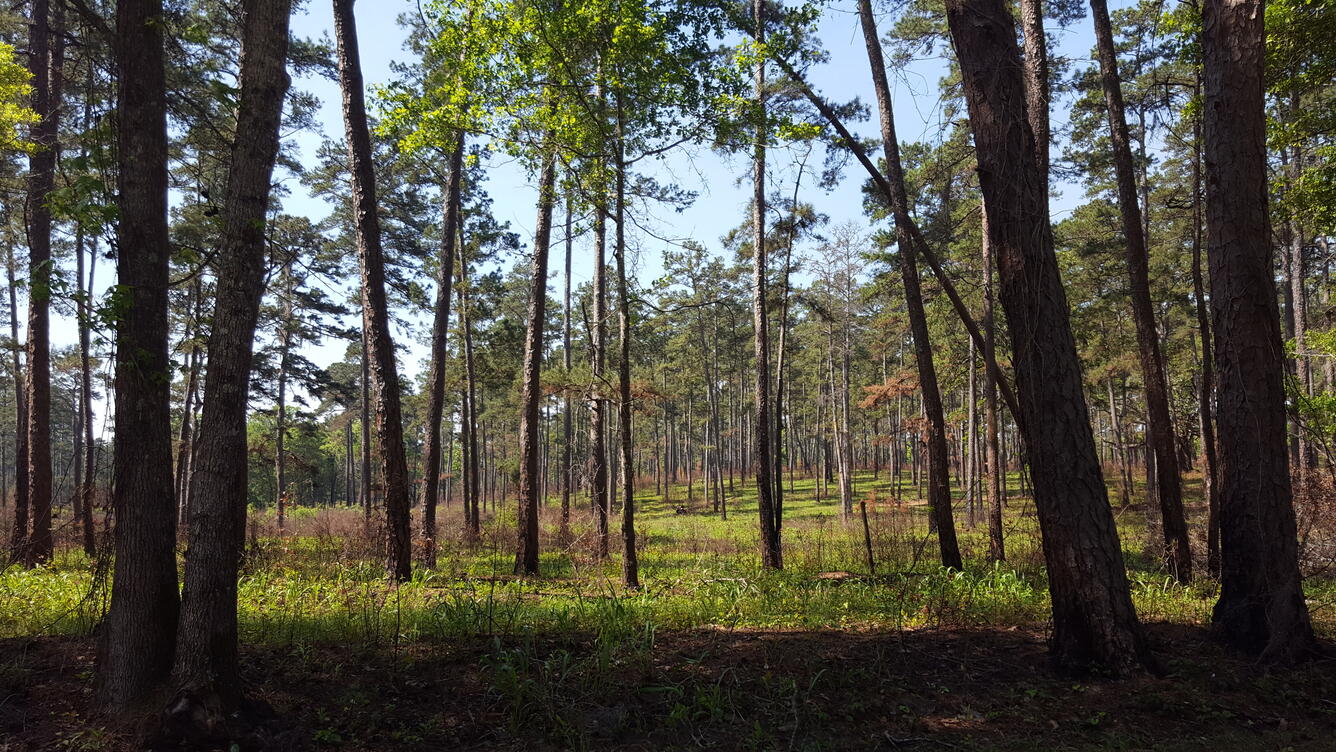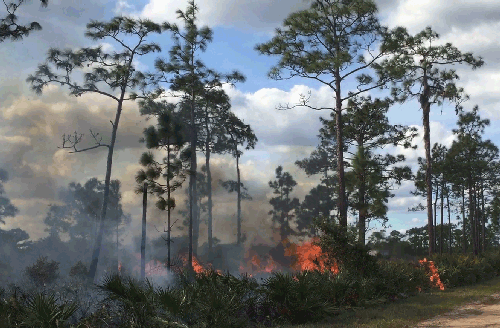Oh Christmas Tree: The Science of Conifer Trees
You might have an evergreen tree in your home this month, but here at USGS, many of our scientists get to enjoy beautiful pine, fir, hemlock, and spruce trees year-round in their outdoor workplaces!
Conifers are trees that bear their seeds in cones (hence the name conifer). The vast majority of conifers have needle-like (e.g. pine or fir) or scale-like leaves (e.g. cypress or juniper). Most conifer species keep their needles all year, so we often refer to these trees as “evergreen” (larches are an exception).
Conifers are an ancient group of plants, splitting off from close relatives like ginkgos and cycads more than 300 million years ago. Before the evolution of flowering plants, conifers dominated forests around the world. The photo below shows conifer fossils from the time of the dinosaurs!
Today, there are about 615 conifer species. Though we often associate evergreen trees with cold, snowy, forests, conifers can be found in all kinds of temperate, arid and tropical ecosystems, such as shrublands, savannas, and even swamps. Conifers include some of the world’s most iconic trees, including the tallest tree (coast redwood), the oldest tree (bristlecone pine), and the biggest tree by volume (giant sequoia), all of which are found in California. But there are extraordinary conifers around the world—like the monkey puzzle tree pictured below, native to South America.
Conifers are the foundation of many forests, especially those at high elevations and high latitudes. They store carbon and provide habitat and food for animals and other organisms. They give humans shade and lumber and firewood and pine nuts and juniper berries. But many conifer populations and species are threatened today by climate change, wildfires, pests, drought, and deforestation.
USGS scientists and partners conduct research to better understand the ecology of conifers and conifer forests and the threats they face.
Here’s a sampling of conifers that they study, and how they study them:
Coring the Prickly Ponderosa
Ponderosa pine is a species at the center of many USGS studies. Ponderosa pines have long needles in bunches of three, and medium-sized cones with spines that point out and can feel prickly when you pick one up (some people refer to them as “prickly ponderosas”).
The photo to the right shows a scientist taking tree cores of ponderosa pines in Lassen National Park as part of a dendrochronological (tree ring) study of how prescribed fire affects tree growth. Using a T-shaped tool called an increment borer, he can cut narrow cylindrical samples from the tree (they can fit neatly in a straw). These cores allow scientists to study the tree rings with little damage to living trees.
Ponderosa pines are adapted to a fire regime of frequent low-intensity surface fires. Ponderosa seedlings might be killed by this type of fire, but larger trees are well equipped to survive a surface fire. They have thick, fire resistant bark, and they tend to self-prune limbs, making it harder for a surface fire to spread to the treetops. Though ponderosa pines can survive surface fires, fire damage may influence its growth, and fire scars will be visible among the tree’s rings.
Restoring the Southern Longleaf Pine Savannas
Not all conifers live in cold, mountainous places. The southeastern United States is home to spectacular longleaf pine savannas. Longleaf pines have, as their name suggests, long needles—they can reach 18 inches in length! Like many of their northern and western cousins, longleaf pine systems thrive with frequent fire, which sustains an open savanna structure where many plants and animals thrive. Animals that live in this system include federally threatened gopher tortoise and indigo snake, federally endangered red-cockaded woodpecker and dusky gopher frog, striped newt, southern hognose snake, Florida pine snake, and Bachman’s sparrow.
Longleaf pine savannas once covered about 90 million acres across the Southeast, but the vast majority of these ecosystems have been lost to logging, fire suppression, urbanization, and agriculture. According to recent estimates, only about 5% of its original expanse remains.
Restoring and maintaining remaining longleaf pine savannas is critical for the wildlife species that depend on these systems. Prescribed burning is among the most important tools for longleaf pine managers. People in the Southeast intentionally burn more land in controlled fires than any other region of the country each year.
But climate change might make it harder to maintain longleaf pine savannas in the future—recent research has found that climate change may limit the opportunities for prescribed burning, which must be conducted during particular weather conditions. These findings can help managers in the southeast adapt management strategies as the climate changes.
A Tale of Firs and Fire
Red fir is one of several species that USGS monitors for long-term population trends, and to find out what drives its dynamics. Red fir gets its name from the red color seen in the deeply fissured bark of old trees. Unlike the pines, which have needles in bundles, firs have their short needles attached singly to branches. Though the red firs people use as Christmas trees are quite small, this species can reach nearly 200 feet.
Another way that red fir differs from many of the pines is in its ecology: red fir is more shade tolerant and less fire and drought resistant than trees like ponderosa pine, especially when they are young. Historically, shade-tolerant species like red fir would have been less abundant in mid-elevation mixed-conifer forests, because frequent low-severity fires would kill young firs. However, fire suppression over the course of the past century has allowed shade-tolerant species like red fir to increase in abundance. Increased densities of shade-tolerant trees can make it more likely that when a wildfire does occur, it will spread from the ground into the tree crowns, leading to a much more intense and severe fire.
The Grey Ghosts of Eastern Hemlock
Like the red fir, eastern hemlock has short needles, likes wet, shady, areas. It has dense, dark green needles and ovular cones, and has provides shady habitat in forests across the eastern U.S. from the Appalachians up through New England. But the eastern hemlock is in trouble: an aphid-like insect called the hemlock woolly adelgid has been killing off eastern hemlocks, moving north from Virginia, where the invasive pest was discovered in 1951, eventually into the Adirondacks of upstate New York, where it was first documented in 2017.
The hemlock wooly adelgid feeds on the trees, forming fuzzy gray masses on the branches and eventually leaving behind the “gray ghosts” of dead hemlock trees. In the Appalachians, entire hillsides are grey. As the pest spreads north into colder regions, scientists are trying to catch it early and limit its destruction.
One of the tools scientists are using to track the spread of hemlock wooly adelgid in New York is Landsat satellite data, which is processed and distributed through the USGS Earth Resources Observation and Science (EROS) Center. Sensors on Landsat satellites can detect the “greenness” of trees down on earth, allowing researchers to identify areas where forests are at risk of mortality from pests or drought without having to walk through every acre of forest. They can then prioritize areas for management.
Want more conifer research? Check out the links below for more evergreen content.














